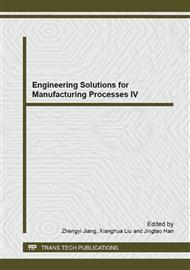p.86
p.92
p.97
p.101
p.107
p.113
p.119
p.125
p.130
The Optimization Design of Wind Turbine Gearbox Based on Improved Genetic Algorithm and Feasibility Analysis
Abstract:
The design of the gearbox must ensure the simplest structure and the lightest weight under the premise of meeting the reliability and life expectancy. According to the requirement of wind turbine, an improved method combined dynamic penalty function with pseudo-parallel genetic algorithm is used to optimize gearbox. It takes the minimum volumes as object functions. It is showed that the ability to search the global optimal solution of improved genetic algorithm and less number of iterations. The global optimal solution is worked out quickly. The size parameters are optimized, as much as the driving stability and efficiency. To verify the feasibility of improved genetic algorithm, ring gear of the gearbox is analyzed. Static strength analysis shows that the optimization method is reasonable and effective.
Info:
Periodical:
Pages:
107-112
Citation:
Online since:
February 2014
Authors:
Price:
Сopyright:
© 2014 Trans Tech Publications Ltd. All Rights Reserved
Share:
Citation:


